8. Crime: No Country for Old Men (2007)
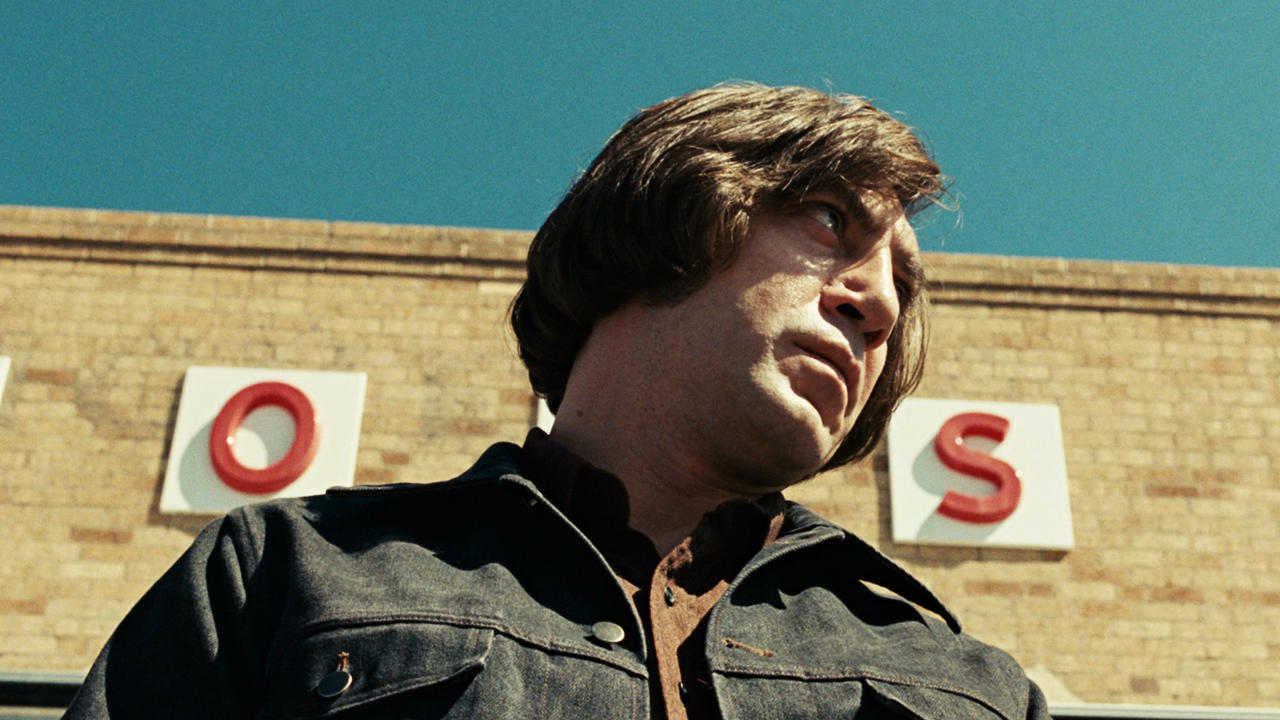
Crime films define a vast, complex and entertaining cinematic universe. From the vintage beauty of “L. A. Confidential” to the genius exposition of “The Usual Suspects,” crime films claim diachronic and faithful followers. But the psychotic and by some manner self-chased monster that directs people of crime is brilliantly and comprehensively described in the best film from the Coen brothers, “No Country for Old Men.”
The severe landscape of west Texas lets out the silently restless aura that dominates a place right before an irrepressible storm. Of course, the disaster outbreaks methodically, but not between the typical opposing poles of evil and morals. This film’s journey deterministically spins around a solid nucleus: the nucleus of crime as a whole.
Ostensibly it’s about money and drugs, like in most cases. The evolving battle, however, doesn’t concern a hero and an anti-hero, or in more plain terms, a clearly decent man and his dynast. This is a formless battle between men and crime’s blank but still unavoidable legislature.
Javier Bardem’s presence in the film as Anton Chigurh is just colder than ice. He has a name and nothing more: no past, no friends, and no clear personal motives. What Anton really carries out is a revering chase of a target, under a foregone and geometrically restricted regime of a superior force. Bardem’s enemies are destructed in one way or another, since this is the fate of those who stand against crime’s autocracy. Following the magnetically non-traditional approach of the Coen brothers toward a subject (situated at a quite traditional setting) is a significant personal conquest.
9. Film Noir: Double Indemnity (1944)
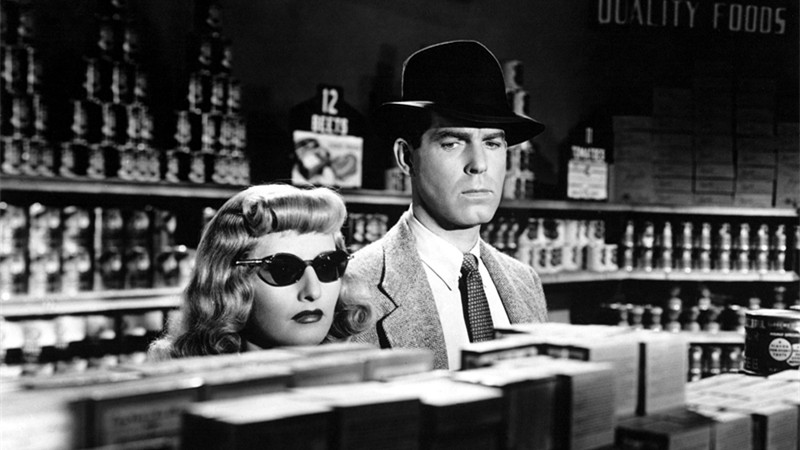
Billy Wilder is the dark and simultaneously sentimental heart of the film noir genre. Perhaps this heart’s beat is generated by his 1944 classic “Double Indemnity.” Wilder’s legend fairly springs from his various masterpieces. For many, his undeniably fascinating film “Sunset Boulevard” reaches the top of the genre. Yet “Double Indemnity,” through its sharpness, fluid ambience, and masterly synthesized characters has it all – nothing more, nothing less.
Walter Neff is sweaty all over his body, but his voice is clear and determined. Sitting in an office chair, he confesses his fatal crimes over the phone. This confession is addressed to the sole person to whom he owes a hearty revelation. Everything happened for money and for a woman, he claims. Following his narration, however, it’s hard to believe him; it wasn’t really about the money.
Walter is a humble insurance representative. He meets Phyllis Dietrichson at her house. She stands in the distance, wearing a towel and a bracelet on her foot. Seeing her nebulous eyes and listening to her deep voice, you know that Walter is already in trouble. Extremely easily, he’s convinced by this obviously femme fatale to kill her husband in order to receive his double indemnity. Walter’s experience seems enough to stage a perfect accident. But a perfect crime never happened, indeed.
Since the story’s mystery is structurally revealed, the narrative’s gravity center is concentrated on its characters. Walter, despite his criminal actions and tenuous motives, is sincerely likeable to his creator and to the viewer as well. Phyllis, on the other hand, is a cold-blooded predator who moves forward to an inhumane and absolutely solitary target. Not a single word of Phyllis’s lips is credible, from the beginning to the end. Her presence, still, is the driving force for this occult and sensational trip.
10. Western: Once Upon a Time in the West (1968)
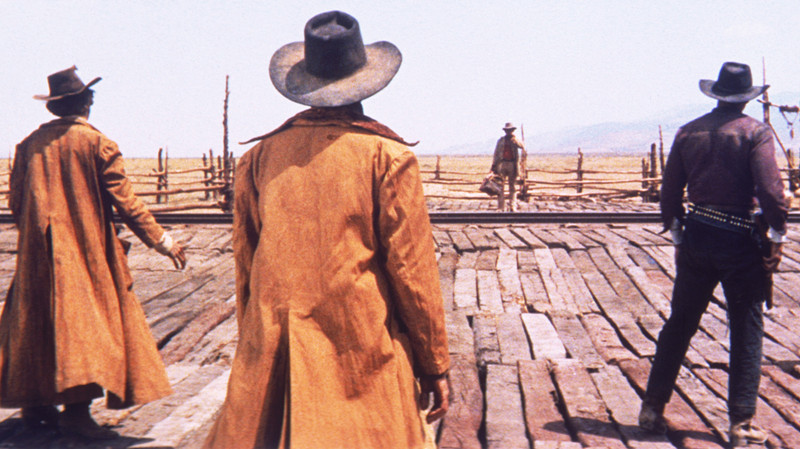
Sergio Leone, the son of an Italian film director and an actress of silent cinema, was meant to be the king of the charming cinematic American West. His western films are numerous, and all of them have something special. Even though his unforgettable “The Good, The Bad and The Ugly” is the most iconic Spaghetti Western, his “Once Upon a Time in the West” is the quintessence of his filmography and the best western film ever made as well.
A railroad is expanded through the barren lands of Arizona, affecting the lives of the citizens as a whole and the fate of specific individuals who sensed this project’s significance as well. On this symbolic vast railroad intersect the pathways of four main comprehensive characters.
Frank is the agent of evil, as a greedy and unstoppable landholder. Manuel, or Cheyenne, is an outlaw idealist. The man who plays the harmonica is bound by the duty of revenge, while Jill, a self-made dynamic woman, is extensively unappreciated by the evolving circumstances.
Each one of these characters represents a whole world of a mundane fate, carrying an overloaded and definitive past. Along these lines, Leone portrays his heroes as the significative figures of their history, attributing a different score theme for each one. The four poles of the story are rotated on the film’s epicenter, and then, their combination provides an overwhelming net force of sounds and dynamics of identity.
11. Science Fiction: 2001: A Space Odyssey (1968)
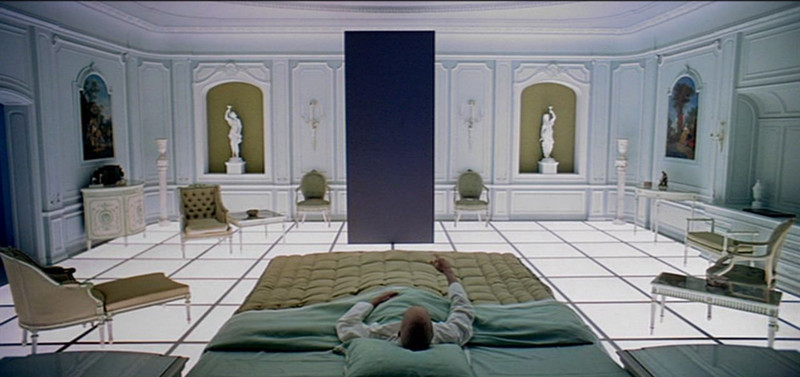
What does science fiction strive to discover in its entirety? Why does our species demonstrate such an intense and unbridled curiosity with respect to its adaptation to remote and hostile habitats? Stanley Kubrick combined his creative strength with Arthur C. Clarke’s flowing literary majesty, and thus, a timeless visual epic poem about humanity’s predestination and potential occurred.
The film’s journey through the space-time continuum gets underway at a prehistoric setting, where a settlement of anthropoids has an unconscious crucial role, accomplishing significant discoveries. One of them occupies himself with a solid bone, and suddenly, the primordial man realizes that this simple item in his hand can be used as either a tool or as a weapon.
Time has gone by enough in the story’s reality, and now humanity’s most significant tool is its intelligence. Admirable machines that are able to discover the ethers, visit other planets, and even create thoughts, have been created by humans. This gradual conquest of the universe seems to be defined by a haunting harmony, geometrical beauty, and glorious ambition. But where should this expansion find an end? At which point will this delicate thread of advancement stop being adapted to its stretch?
By letting yourself be free to wander in the acoustic and optical melodies of this masterpiece, many profound questions will occupy your mind. The film’s grace, however, lies in its multangular philosophical aspects, which systematically emerge from the film’s diverse focus on space and time. At the finale of “2001: A Space Odyssey,” an unprecedented sense of awe, terror and modesty is unavoidable and persistent.
12. Fantasy: Pan’s Labyrinth (2006)
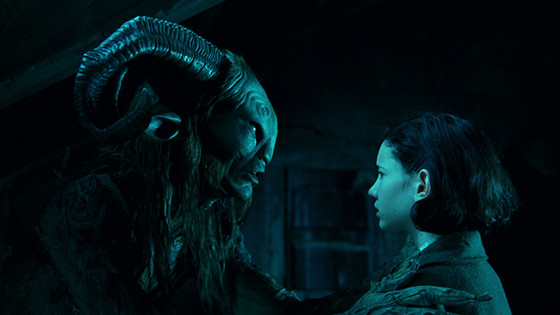
Our world’s exiguity is blind, rotten, cumbersome, but also greedy. Focusing on a distraught period of modern European history, Guillermo del Toro draws a harmonious and comprehensive mirror that reflects our reality’s sorrows, tragedies, and inherent vices in an eerie world of forgiveness and terror. The cinema of fantasy has never been so describing, graphic and sentimental as del Toro’s cinema of “Pan’s Labyrinth.”
Societal maladies, in various forms and ferocities, are created and dominated by adults. The children, on the other hand, are those between us who suffer from their dysfunctional surroundings more than anyone else. Still, children comprise a shiny optimistic hope for change. In her pure unawareness of the world’s bleakness and egotism, Ofelia receives the duty of a dicey and at once revealing mission in the mystified labyrinth of a familiar underworld.
The film’s narrative, as it emerges from the alteration of reality and fantasy, the absolutely stunning cinematography, and moreover, the bold truths and prospects that tenderly flow from the story’s development until the finale’s unveiling, synthesize an artistically complex and deeply humanitarian piece of an unbowed cogitation.
13. Action: Crouching Tiger, Hidden Dragon (2000)
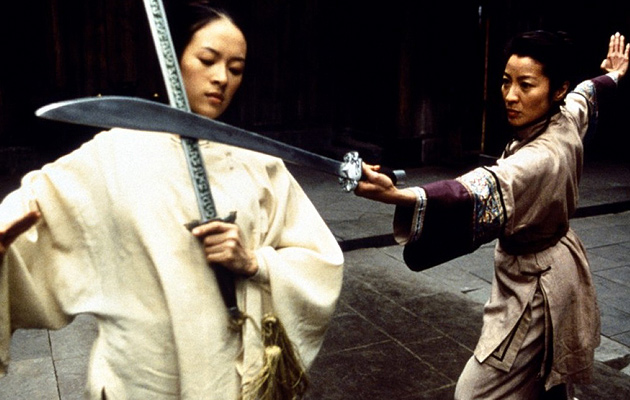
The impressive reality of Ang Lee’s “Crouching Tiger, Hidden Dragon,” more than drifting into a colorful and intoxicating navigation through Asian legends and breathtaking sceneries, attempts a pursuit of an ultimate mental freedom. The film’s spirituality is meant to break the bonds of flesh, allowing the bodies to have complete control of their movements and surpass the limits of gravity.
The structural triangle of characters consists of a legendary fighter of martial arts, a mature and skillful female fighter, and a young girl of aristocratic origin who managed to be introduced to the martial arts since she was little. All of them own a precious skill and an eternal mental gift. Watching them fighting, for all those ideas that divide them and simultaneously make them a persistent whole, one experiences a disturbing pleasure of their weightless bodies and rhythmical moves.
Despite their surreal abilities, each one of these powerful figures has a sensitive point: a sentimental lust for an unfulfilled expectation that, in opposition to their flexible and almighty bodies, keeps them bound to the ground. Their actions throughout the story, in one way or another, intend to obtain those distant treasures of substantial liberty and fulfilment. The ideas hiding behind this film’s solid foundation convert it into the best action movie ever made.
14. Musical: West Side Story (1961)
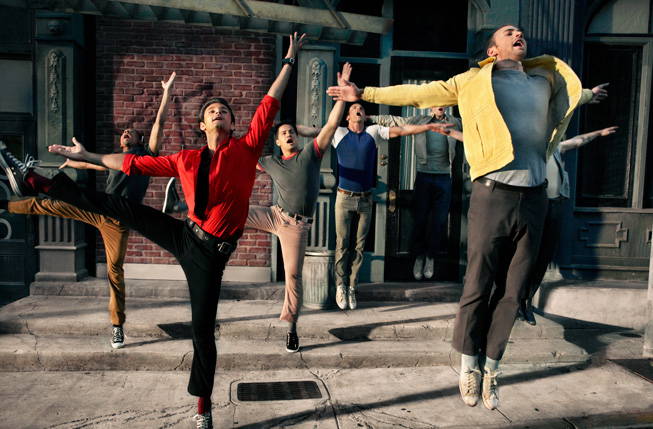
Perhaps musical films are addressed to a minority of the film enthusiast community. Throughout the years, however, numerous notable musical films have come out, as “Singin’ in the Rain,” “My Fair Lady,” “Cabaret,” and several more. All of them provide aesthetical pleasure and moments of entertainment. But if you have to choose only one musical film to watch, it should be the sincere and devastating 1961 film “West Side Story.”
An adaptation of William Shakespeare’s play “Romeo and Juliet” projects the classic story of two innocent young people who fall in love, despite their differences and the tensed social circumstances around them, in the bloodstained impoverished streets of Manhattan during the 1960s. Through the film’s apt depiction, Shakespeare’s most famous tragedy becomes more vivid and topical than ever in its symbolic and timeless entirety.
A simple boy and a naïve girl are attracted to each other, representing a foregone force of humane union and progress. In their case, the two clashing armies of undue hate aren’t Montagues and Capulets, but two gangs of young immigrants. The European and Puerto Rican immigrants have different originations, native languages, accents, and skin tones. These nonessential differences seem enough for them to feel abhorrence and fight without mercy day after day. Yet, watching young people fading out again and again, the story’s tragic community perhaps finds out that what tears this world apart is their hate.
15. Animation: Howl’s Moving Castle (2004)
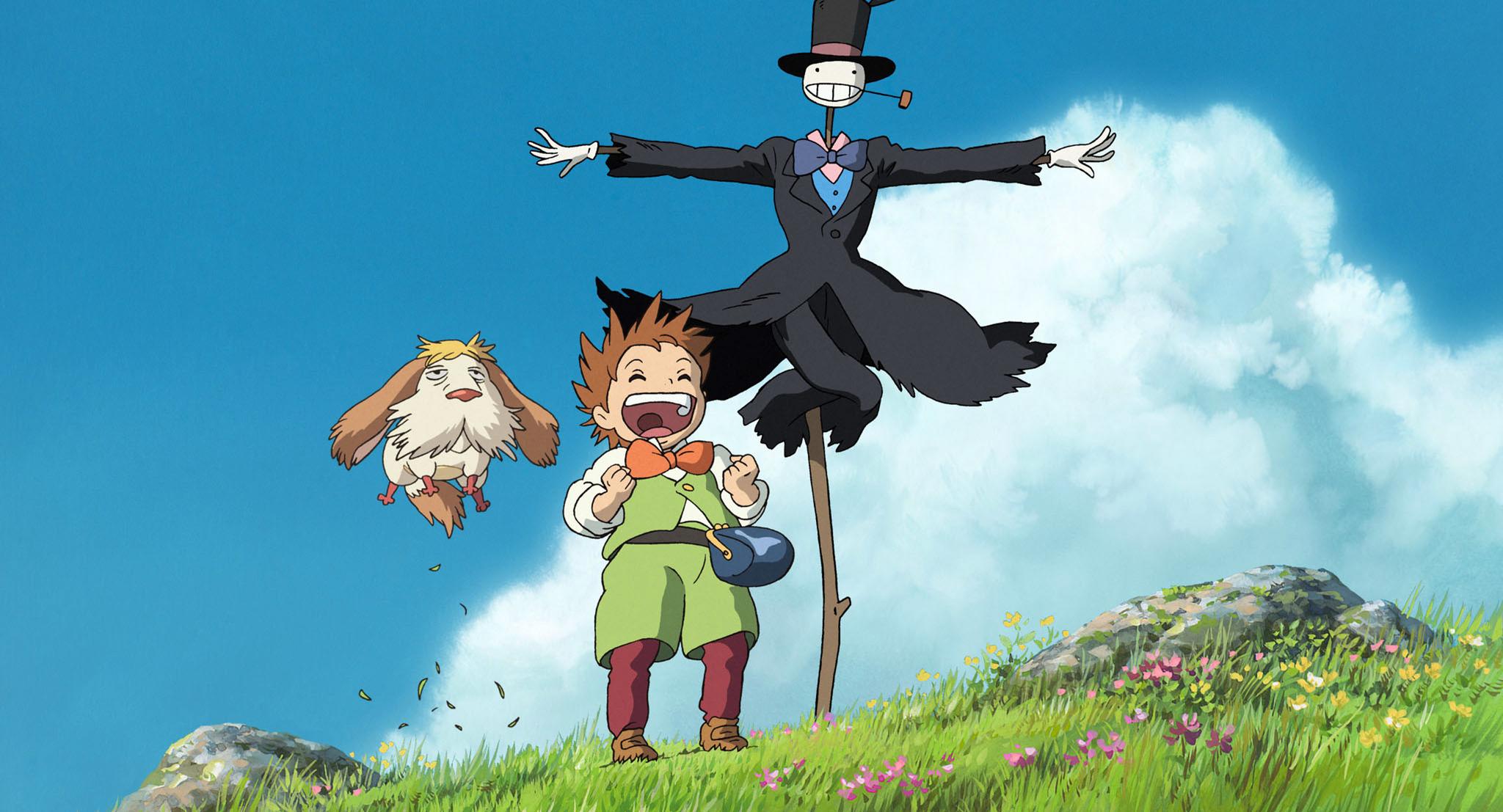
Hayao Miyazaki’s films define a bewitching, absolutely unique, and at once terrifying phantasy sphere, which includes a tangled splice of reality and imagination. Through his hypnotizing trips within the unexplained, Miyazaki intends to spread the viewer’s spiritual horizons until the mundane and inner lands become completely comprehended.
One could say that Miyazaki is an eternal kid, that he carries an intelligent, creative and artistically thorough child’s soul. Even though
“Spirited Away” is considered as his most mature work, his underrated “Howl’s Moving Castle” captures unlike any other animated film the terror, the nostalgia, and the free spirit of childhood and youth. Unfortunately, many ideas of this film stay intact by both instant cerebral digestion and following analyses.
In an undefined modern European city that is in the midst of a war, a young girl is cursed by a grisly insatiable witch, who turned her into a 90-year-old lady. The girl is shocked, and joins the moving castle of Howl, a charming but bizarre wizard who’s obsessed with his undeniable beauty. This moving castle takes our heroine away from her city’s organized, complex, but also collapsing environment. Her trip brings her close with places of unknown geographical or even chronological settings, while she stepwise accepts herself through her decrepit body, in a common search for identity with Howl.
Essentially, this fairy tale explores and accepts youth’s yearning for immortality, dominion, and eternal beauty of sentimental and physical features. An 18-year-old girl is subconsciously terrified by the idea of senility. When she comes up against it, however, a gradual acceptance of life’s fading away takes place inside her. The journey through life’s scattered sceneries, emotions and memories is what really matters in the end.